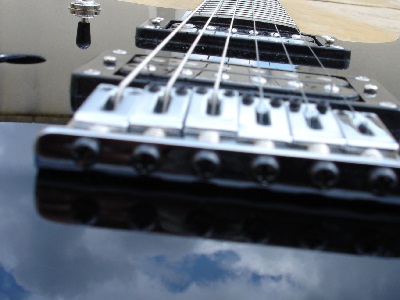Getting Pitch Perfect Intonation on Your Instrument
 Tuning is important. Without proper tuning, our guitars simply sound like a bundle of floppy notes. Not only is it unpleasant, but it makes playing much more difficult.
Tuning is important. Without proper tuning, our guitars simply sound like a bundle of floppy notes. Not only is it unpleasant, but it makes playing much more difficult.
Every guitarist knows this in their heart of hearts; an unturned guitar is blasphemous. It assaults the senses and throws off everything that we have worked so hard for. What many guitarists don’t know is that tuning is only one step of the process.
Intonation is, in basic terms, your guitar’s tuning throughout the entire neck.
Believe it or not, just because you have proper tuning with open strings, doesn’t mean that you will have proper tuning with fretted notes. In this article, we will teach you the basic skill of setting intonation for guitars so that you can stay in tune at any place on the neck.
What Kind of Bridge Do You Have?
First off, look at your bridge. If you have a hipshot bridge, your guitar will have saddles. To adjust the intonation, each saddle has a screw on the end that allows you to push the saddle backwards through tightening, or forwards through loosening.
If you have a Tune-O-Matic bridge, there are screws on the end of each string rest that allow you to either push the saddle forwards by loosening the screw or pull the saddle backward by tightening the screw.
If you have a Floyd Rose or other locking tremolo, you may notice that each string is fed into a slot. Each slot is a saddle, and it can be either moved forward by loosening the adjuster or pulled backwards by tightening the adjuster.
You may have noticed a pattern here; all saddles work in basically the same way, no matter how different they are. This is because the only way to adjust a string’s intonation is by pushing it forwards or pulling it backwards.
Now that you know how to make the adjustments, we need to explain how to set the intonation.
Step by Step Guide to Perfect Intonation
Intonation is adjusted by checking the open note and the twelfth fret note of a string. You may notice that they are the same exact note. They are an octave.
For this part, you will need to plug into a tuner. Play your low E open, and tune it so that you’re tuned perfectly. Once you have tuned perfectly, fret the twelfth fret and play the note. You may notice that it is either sharp or flat. This is because your intonation is off.
To adjust your intonation, either bring your saddle forwards or pull it back. Pulling back the saddle sharpens a note, as it adds more tension. Pushing the saddle forwards flattens the note, as it creates less tension.
Adjust in small increments, moving only a tiny bit at a time. In between each adjustment, retune your open string. This is important because when your move the distance of the string, you aren’t just changing the tension on the twelfth fret; you’re changing the tension on the entire string. This changes the tuning everywhere on the neck.
Once your tunings are even and proper, move on to the next string.
As you can tell, setting intonation for guitars is easy. Have a little patience, and you’ll be on your way to perfect tuning in no time.
Learn to Setup Your Own Guitar Anytime, Anywhere
Learn And Master Guitar Setup & Maintenance is a comprehensive step-by-step video course that shows you how to setup your guitar at home using simple tools.
You will be able save time and money by learning to make your own adjustments for maximum playability and better tone.







Leave A Comment